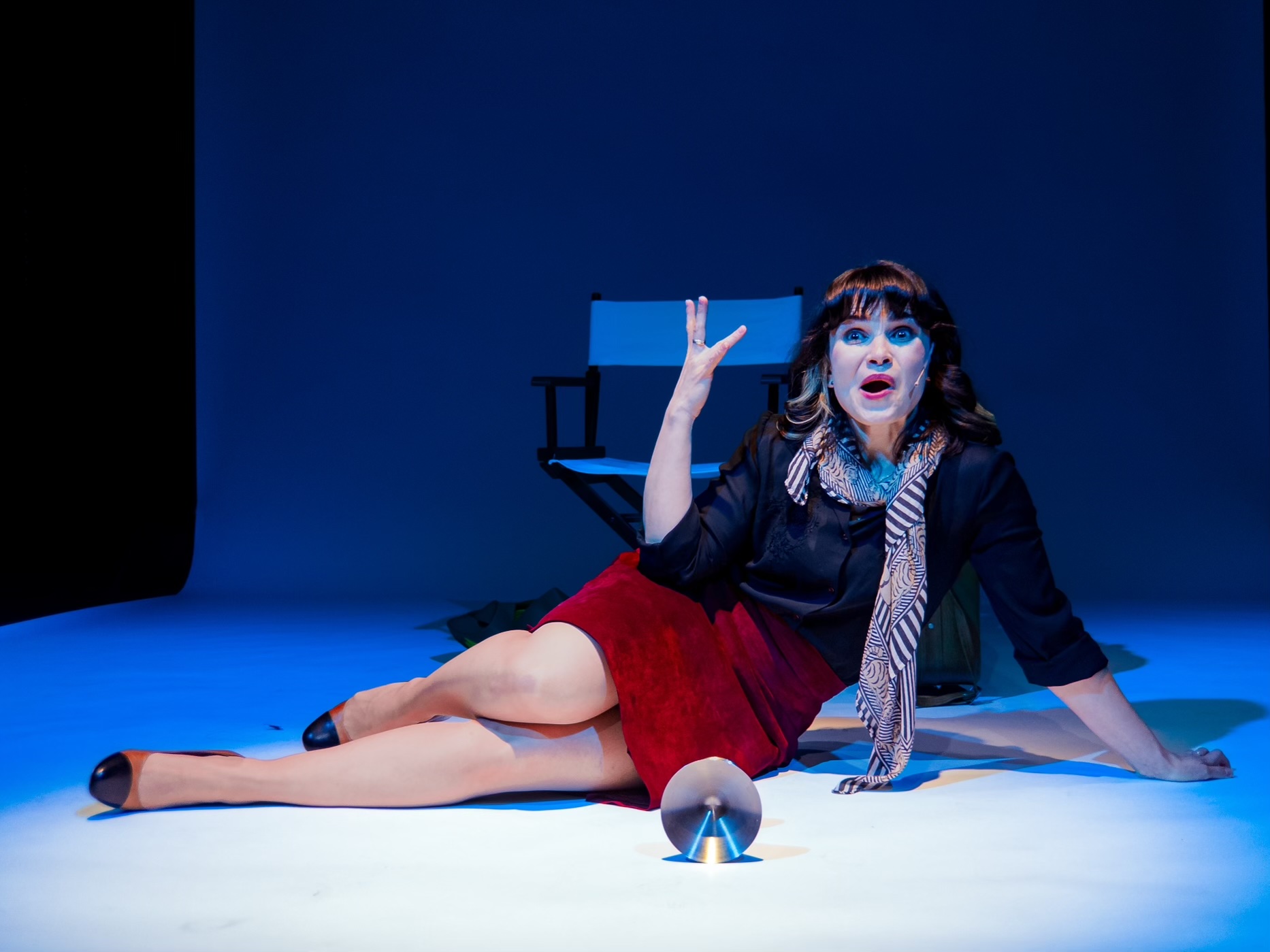
Shiva Kiana in Iranian Girlfriend. Photo: Charlie Dennis
It is rare to walk out of a theater thinking, “I wish that show I just saw was twice as long,” but Iranian Girlfriend, written, directed, and performed by SB Tennent, might just fall into that category. The piece, which bills itself as “a work of fiction inspired by true events,” puts a lot of pieces into motion, but then doesn’t stick around long enough for them to really assemble into a shape. Its segments are individually crisp and provocative; its performances expertly walk that fine line between emotive realism and sardonic commentary on themselves; its musical numbers (music by Chad Raines, lyrics by Tennent and Raines) are disparate and weird and fun. But at a certain point, the show shifts into a moment of audience participation that feels desultorily improvised (though it isn’t)–then it just throws us a quick reprise of one of its musical numbers and stops, barely more than 45 minutes long.
Iranian Girlfriend loops in and out of several recurring themes: How we deal with the detritus and debris of life, both as individuals, particularly women, and as a culture. Feminism and violence. Immigration and otherness. The ways that the stories told about our lives are always, slightly or hugely, out of alignment with the lives themselves. Its precision of tone–incisive and goofy at the same time–is the main glue holding together the disparate parts. Tennent as both performer and director has a tartness that wipes out any of the sentimentality you might expect in talking about her deceased mother, and she brings the same quality to her direction of the other two performers: Shiva Kiani, playing a character who is and is not Tennent, getting drunk in an airport and reading Foucault. Asal Takesh singing about strawberry jam. All three of them in an extended riff on the background of Medea.
The design elements, while simple, are effective, with especially smart use of Karen Boyer’s costumes and Ein Kim’s projections. Boyer’s costumes both fill out the quick character portraits and add witty touches (particularly the strawberry-shaped sunglasses that Takesh and Kiani wear for a musical number about jam). There’s a clever mix of live filming and projected video backdrops in the early part of the piece, and then projections popping back up in unexpected places on Yung-Hung Sung’s set later in the show. Tennent the director finds a surprising way to transform the space with a reveal midway through.
And yet too many of these ideas and scenes feel like sketches whose outlines haven’t been filled in yet, moments whose connections haven’t been fleshed out. There are so many ideas, so many things tried, and not enough time lingering anywhere for the piece’s internal logic to take over. As a tour through or a meditation on events and ideas and people that shaped Tennent’s perspective, Iranian Girlfriend gives us a lot to enjoy. But as theater I wanted just a little bit more to hold on to—a through line, a perspective, a voice.
Having said all of that, Iranian Girlfriend also bills itself as an “autofiction performance installation,” which does feel about right, and maybe thinking about it as installation more than theater piece is the right approach. I don’t always have a ton of patience for autofiction in literature–too often you get the worst of both memoir’s solipsism and literary fiction’s careful prose craft–but this piece engages with the fuzziness of identity and the way autofiction intentionally muddies the line between truth and fiction, between craft and life. In using an ensemble to both represent and comment on her own character (while herself playing a director within the piece as well as directing the piece itself; it’s all quite meta), Tennent finds a compellingly theatrical way to engage the genre.
